Stewards celebrate accomplishments of their first year in Western Cemetery
By J. Peter Monro

In May, in this newspaper, we Stewards of the Western Cemetery asked for help conserving and enhancing the remarkable historic graveyard and contemporary jewel of a public green space that is the Western Cemetery. You responded resoundingly. In so many ways!
More than 125 people signed up to repair gravestones, lead tours, manage vegetation, raise money, conduct historic research, or publicize our work. Over the summer those and thirty-five more individuals donated beyond $10,000 to buy tools, a toolbox, mortar, and cleaning agents, pay for insurance, and hire a professional conservator to spend four days in the grounds repairing gravestones.
For our first year on site, volunteers accomplished an awesome amount by almost any measure.
On May 7th, more than seventy-five people attended our opening tour describing what we knew of the cemetery’s past, its present condition, and what we hoped for its future. A dozen more tours were held through summer and fall. We were joined by a half dozen leaders, including Alessa Wylie from Greater Portland Landmarks, neighbor Reeven Elfman, Mike Ciamaga, the city’s Cemetery Superintendent, Stewards President John Funk, our treasurer Sam Wilson. Also, Heather McCargo, founder of the Wild Seed Project led a native plant tour.
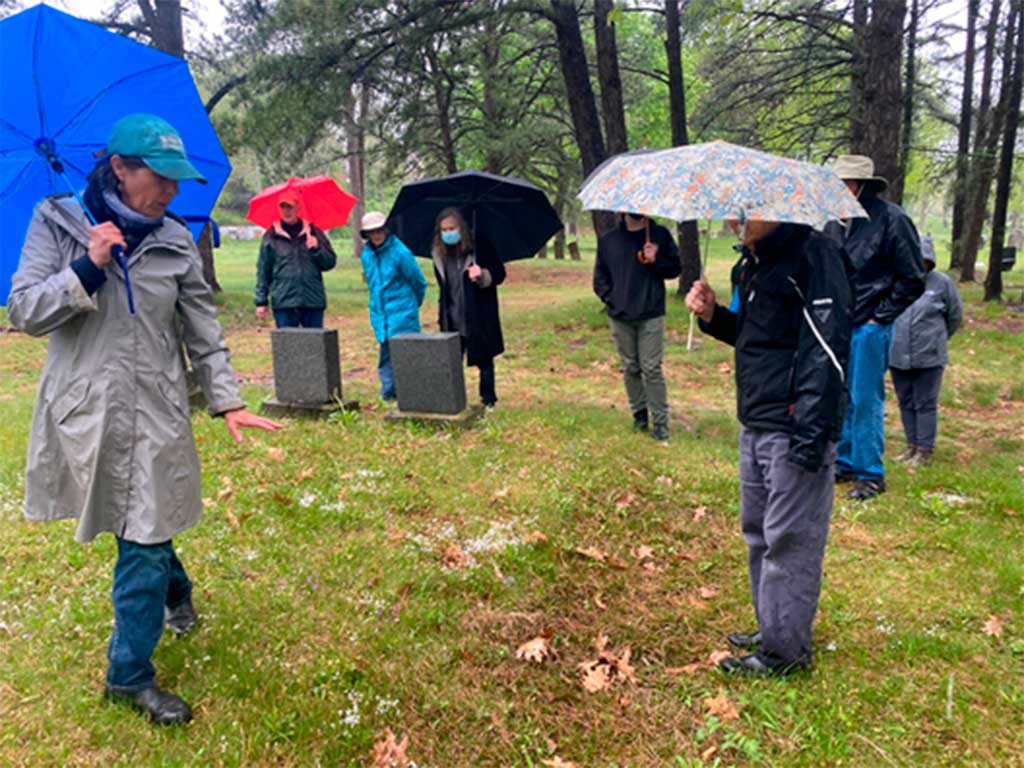
In early spring, Anna and Brent DeLong brought their metal detector over to look for historic relics—stainless steel markers, metal rods marking the borders of family plots, and the like.
The Stewards’ Vice President Derek O’Brien prompted modifications to the stone entryway that assured continuous access for all.
For three busy days in July, twenty-four volunteers worked with the New York conservator Joe Ferrannini cleaning, re-setting, and repairing gravestones.
As a result, five dirty, broken, toppled-over stones in a sad grouping along Vaughan Street turned into nine upright, white, complete stones representing seven individuals in three generations of the Greene family. After the mortar cured, they were unveiled during a tour on July 23rd.
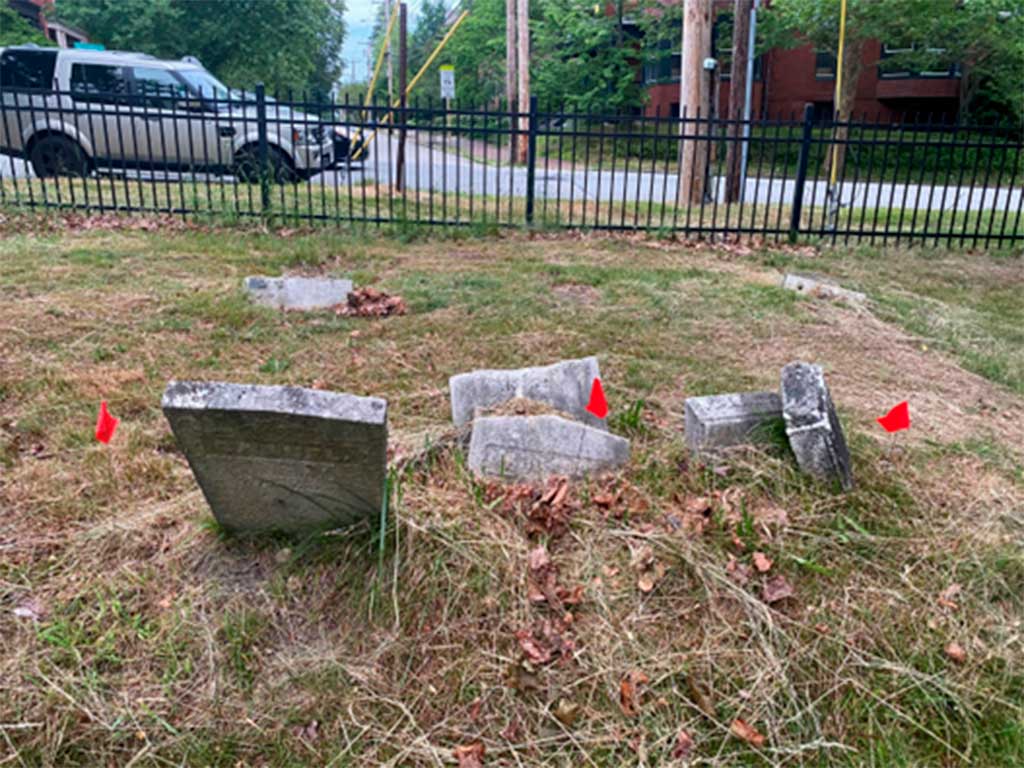
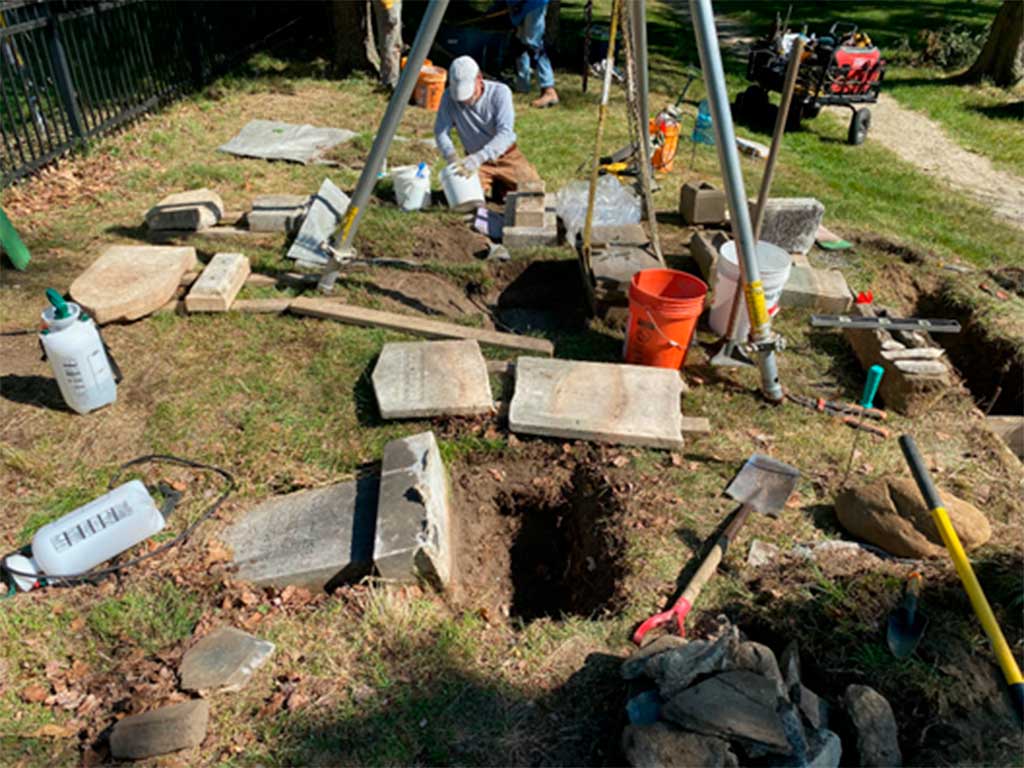
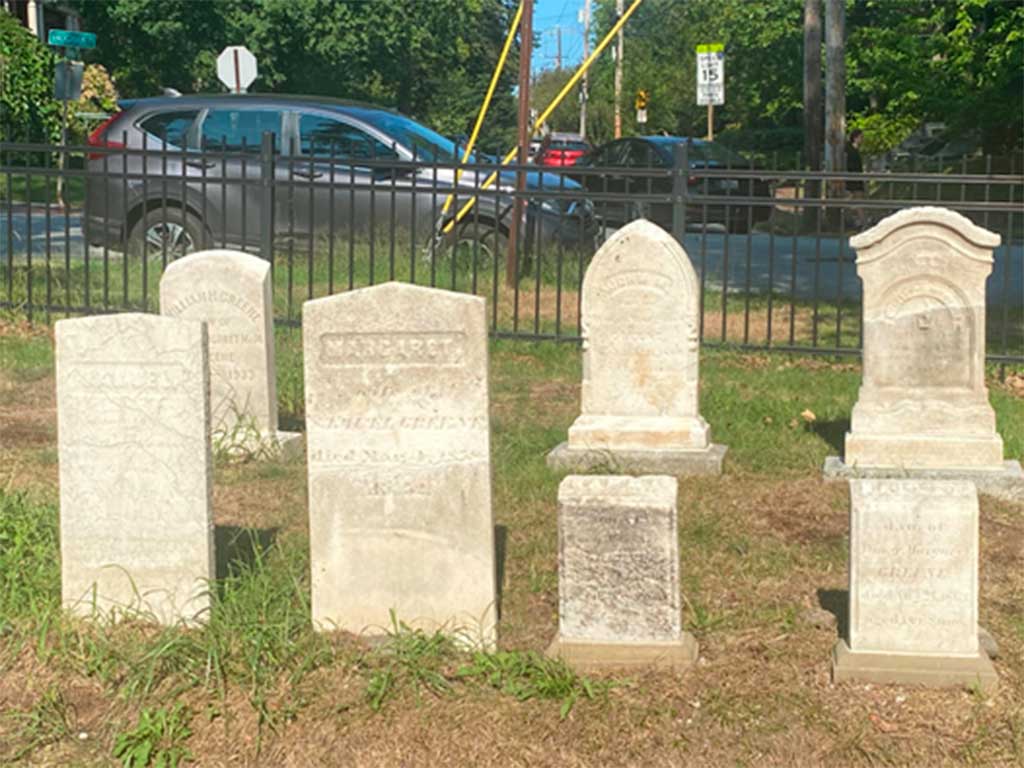
Mysteries arose with the stones.
Why were members of this Catholic family buried here in what may have been the Strangers’ Ground instead of in the Irish-Catholic quarter? Why was the first burial in 1856, four years after all the cemetery’s family plots had been sold? Were these Greenes related to other Greens and Greenes buried elsewhere in the cemetery?
Other mysteries, too. Why is the rough, massive stone bearing Jonathan Dresser’s name and its rough footstone standing nearby, dated 1800, when no cemetery existed here until 26 years later? We straightened and cleaned the stone without knowing the answer.
Another mystery: Are the relatives of Marianna de Remila of Dutch Guyana—later known by her married name of Mary Ann Barnet, now with grave markers near the hillside tombs—the only black family buried here?
Delving into these and other mysteries is John Johnson, a public historian who is preparing parts of the cemetery’s nomination for the National Register of Historic Places. Solving one, Judith Southworth provided history of the “Little Castles” bordering the western side of the cemetery.
Overall, since early July, volunteers have cleaned forty-three stones.
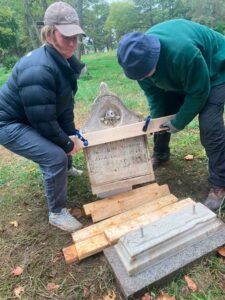
One volunteer, Sara Graves, continued cleaning with her own kit. She stopped only with the onset of these recent dark, cold days.
She was among the several volunteers who ended the season by locating, raising, cleaning, and reassembling the Ruth Stetson tablet on its handsome double base. Located facing the row of hillside tombs, its carving of a rose serves as the Stewards’ logo. The Ruth Stetson tablet now stands erect and shines bright white to all passersby.
On another track, in late September, eleven volunteers spread and shaped roughly thirty tons of city-provided gravel. They did so by hand to repair eroded paths and protect them from future erosion.
Others volunteered to remove and suppress invasive vegetation, like multiflora roses and black swallow-wort, on the hillside and nearby. To carry this work forward, a vegetation management plan is in the works. It will encourage wildflowers and other native plants and trees.
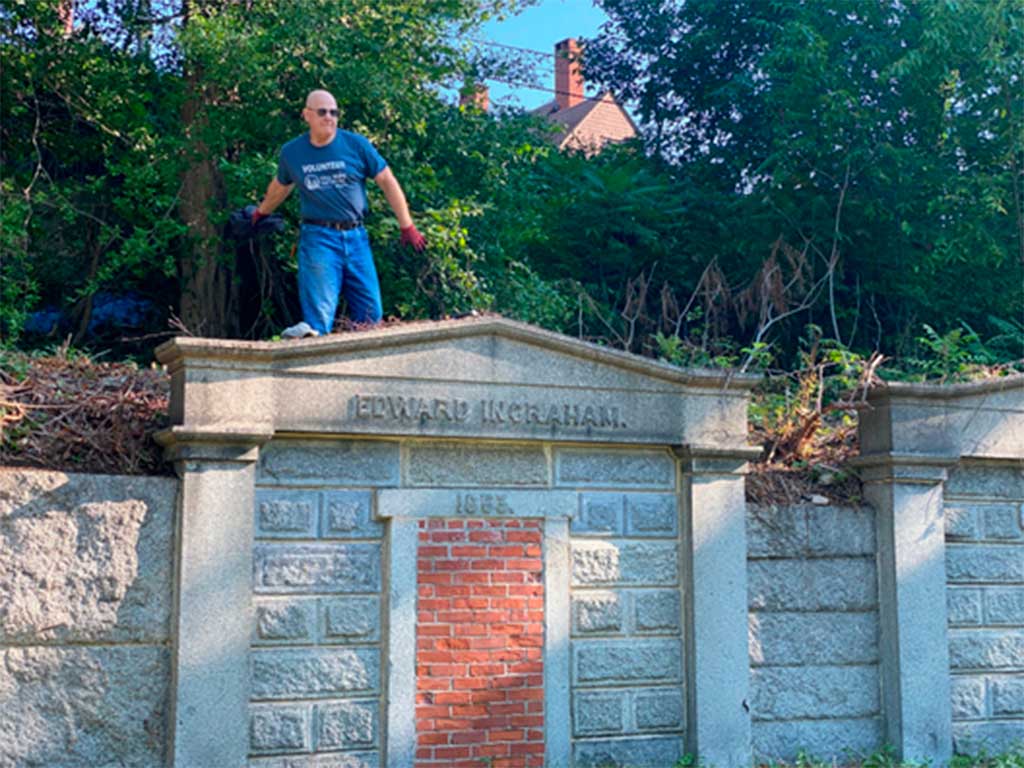
Spring Street’s Rodney Bellino took it upon himself to retrieve trash from throughout the twelve acres every Friday. He also reported on the Cooper hawk family, foxes, and other wildlife he observed there.
All told, volunteers last year invested more than 600 hours in refurbishing this city-owned cemetery. That doesn’t include the late October morning thirty-four city staffers, helped by Mayor Kate Snyder and City Manager Danielle West, spent leaf-raking.
Already, the Stewards and the city are preparing for the coming year.
We expect to be back before the city’s Historic Preservation commission this month. We seek approval of a design of a tool house near the maintenance entry.
Also, we are readying a survey of volunteers to establish committees to carry out the many tasks that lie ahead. These include a capital fund drive to pay for the tool house, a water line, remaining tools, and fencing along the Western Promenade.
Meanwhile, Superintendent Ciamaga is seeking a half dozen city residents to purchase benches for the cemetery.
By this coming summer, we should be ready to train and engage those who are interested in gravestone cleaning, resetting, and repairs. That will be possible in part because we anticipate bringing back Joe Ferrannini for a few training days.
For now, we wish to thank everyone for your extraordinary support and ongoing involvement that has made this inaugural year such a success!
Peter Monro, a West End resident, is a retired landscape architect. He has served as a member of the Portland Parks Commission and as board chair of Portland Trails.

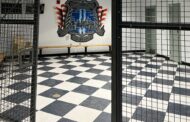
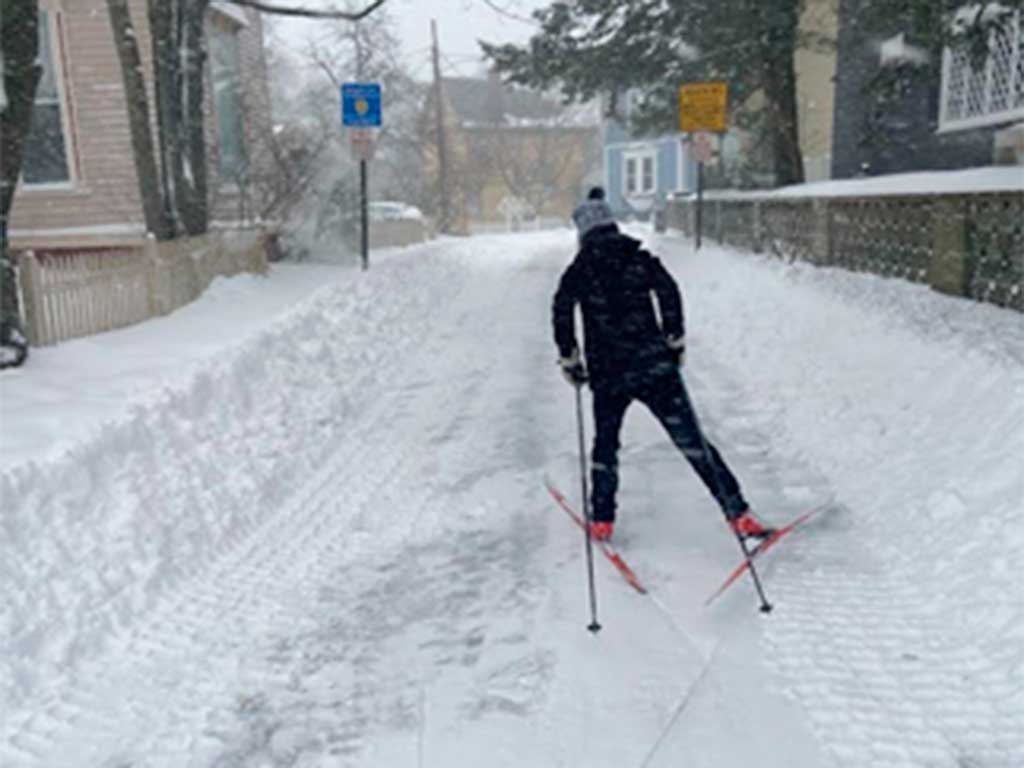



1 Comments
Pingback: Western Cemetery - Breakthrough Year by the Numbers - The West End News